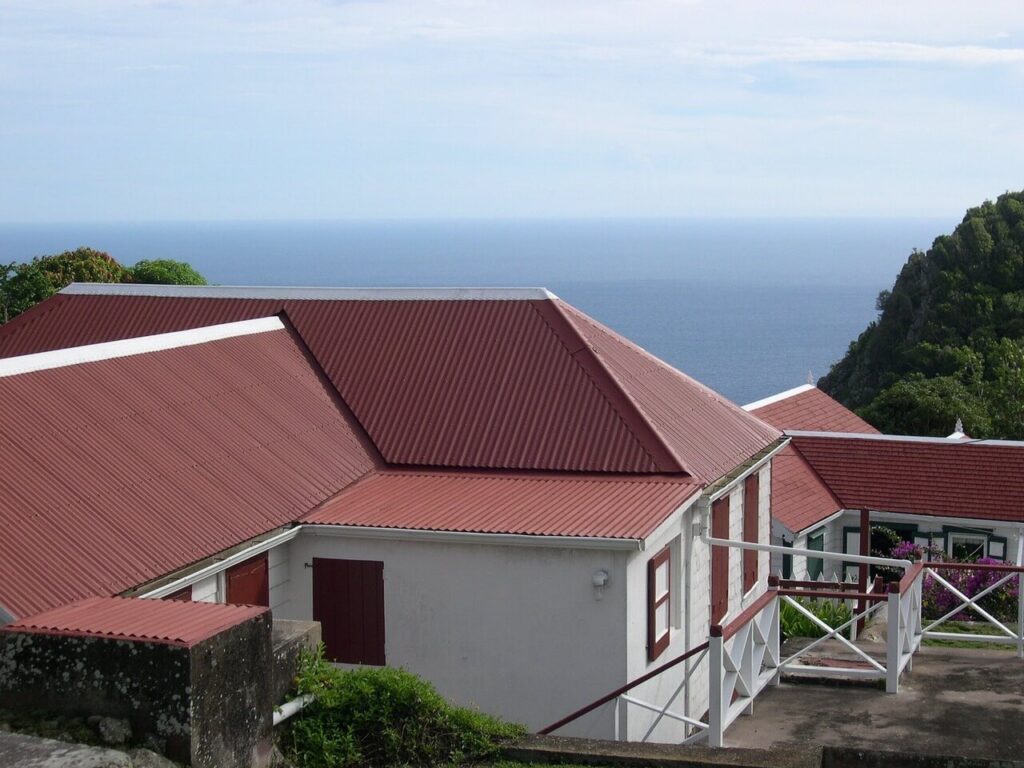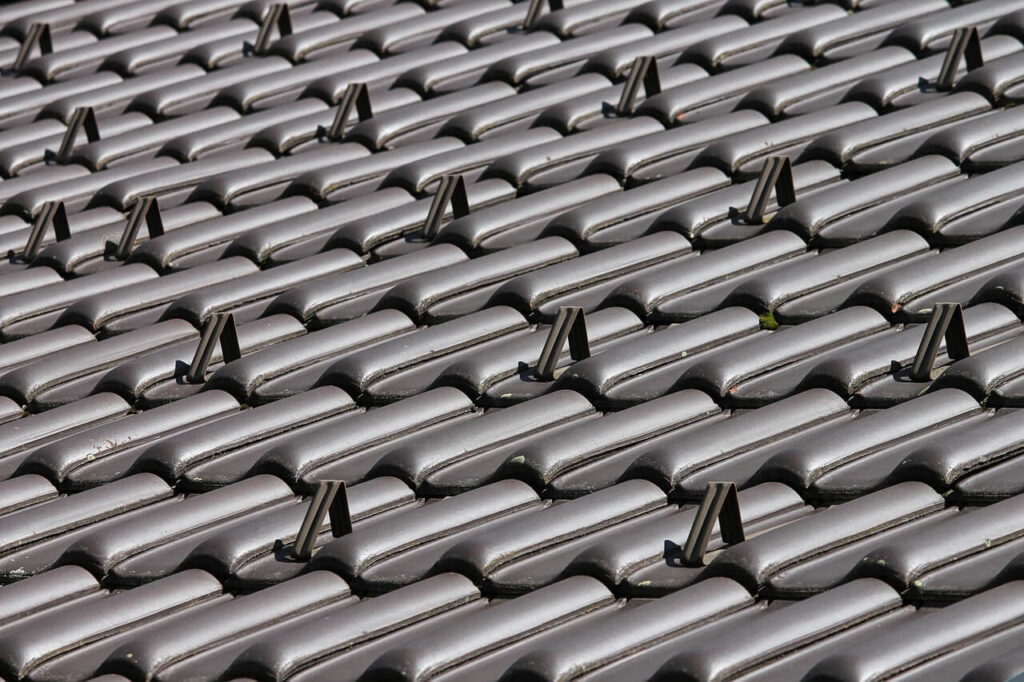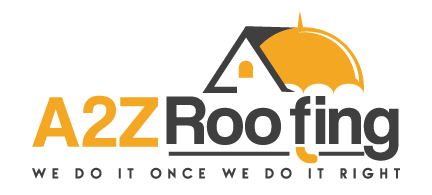Common Roofing Issues and Indicators It’s Time for a Roof Replacement
As your roof ages, there’s a likelihood that it will exhibit signs of wear and tear. Repeated exposure to severe storms with high winds, debris, and heavy snowfall can lead to significant damage, necessitating major repairs or a complete replacement. Some of these issues might not be apparent to the untrained eye, underscoring the importance of engaging a reliable roofing contractor to conduct a comprehensive inspection of your roofing system. This proactive approach allows you to identify problems that can be addressed through repairs or obtain the necessary information to initiate a reroofing project.

The Roofing Issues Frequently Encountered
Being informed about what to observe is crucial when making decisions about repairing or replacing your roof. Although a roofing system comprises various elements, issues can arise from almost anywhere. However, the majority of problems tend to originate in one of three areas: manufacturing inadequacies, installation errors, and the impact of Mother Nature.
Production
Manufacturers have significantly enhanced the design and production of roofing materials. Nevertheless, there are products available that surpass the quality of others. For instance, shingles featuring a robust design and crafted from high-quality materials will withstand damage and have a longer lifespan compared to thinner, inexpensively processed shingles.
Poor Installation
Considerable research should be undertaken when choosing the contractor to install your roof. Engaging the wrong contractor can result in incorrect roof installation, leading to leaks that damage other structures in your home and significantly reduce the lifespan of your new roof. A reputable contractor possesses the experience to ensure everything is done correctly, including accounting for the expansion and retraction of materials with changing seasons, addressing the home’s breathability aspects (reducing moisture buildup), and effectively installing roofs on even the most complex architectural structures.
Exposure to Weather Conditions
The climate has the most significant impact on roofing. Intense summer sun, storms with high winds and debris, and icy winter conditions all contribute to the wear and tear of roofing materials. Hail is particularly damaging to older roofs that have lost their ability to resist impact. The depressions caused by hail can result in moisture seeping through to the underlying layers of the roof, causing substantial damage. With consecutive rainstorms, the protective granules on the shingles gradually erode, making the shingles more vulnerable to damage. Lastly, high winds have the potential to tear shingles off the roof.
Inadequate Ventilation
Homes require proper ventilation to prevent the accumulation of humidity and moisture, which can lead to the formation of mold and mildew pockets. These issues can spread throughout the house, and mold spores may become airborne, posing health risks. Inadequate ventilation can also result in rot, significantly jeopardizing the integrity of the roofing system and potentially spreading into the walls of the home.
Tree Impact
While shade trees can provide protection to a home by blocking sunlight and preventing excessive damage from ultraviolet light, branches making contact with the roof can significantly shorten the lifespan of the roofing system. Reputable roofing contractors will bring to your attention any potential issues related to trees on your property that may affect your roof.
Insufficient Regular Maintenance
An annual inspection allows your roofing contractor to identify areas of the roof that require repairs. When neglected, blemishes on a roof can transition from being merely aesthetic concerns to structural problems that are much more expensive to fix. Regular maintenance includes inspections following severe weather events. Although you might not notice damage, a professional roofing contractor knows precisely where to look and can detect small damages before they escalate into more significant issues.
While your roof may not last indefinitely, there are steps you can take to ensure you get the most possible lifespan out of it. At A2Z Roofing, we collaborate closely with our clients to ensure every aspect of their roofing system is functioning as expected, and any damage, whether large or small, is promptly and efficiently addressed.
12 Indications That It’s Time to Replace Your Roof
Many homeowners may not possess the knowledge to discern when it’s time for a roof replacement. To gain better insight into this matter, review the following list, which outlines the most common reasons roofs may require replacement.
Aged Roof
Regrettably, every roof has a lifespan that isn’t infinite. After enduring 20 to 30 years of exposure to the sun, wind, rain, hail, and snow, the roof starts to experience issues that necessitate a complete roof replacement.
Water Damage
If you observe moisture buildup in the attic or upstairs rooms, there’s a strong likelihood that the roof is experiencing issues that allow moisture to penetrate. Water damage on interior walls may also be attributable to a problem with the roof.
Cracks and Holes in Your Roof
Age and exposure to the elements can lead to the development of cracks and holes in your roof. While some may necessitate repairs, the damage can be so extensive that it requires the replacement of the entire roof.
Sagging
A sagging roof is a clear indication that moisture has infiltrated the supporting structures of the roof, causing them to yield under the weight of the roofing system. To prevent a collapse, it’s advisable to promptly replace both the roof and supporting structures.
Poor Valleys
Water can accumulate in regions of the roof where valleys form. A correctly installed valley facilitates the swift and smooth drainage of water from the roof. However, improper installation or aging can result in issues that may necessitate replacement.
Poor Membrane
Membranes play a crucial role in preventing moisture that penetrates the shingles from reaching the underlying wooden structures of the roof. When the outer layers of the roof start to deteriorate, membranes can sustain damage, often necessitating a complete roof replacement.
Impaired Flashing
Chimneys, vents, and other roof structures, like skylights, employ metal flashing positioned between the structure and roofing material. The caulking used to waterproof the areas around the flashing may dry out and crack over time, causing leaks. Debris can also damage the flashing. Improper installation of the flashing is another issue that can result in leaks.
Moisture, Rot, and Mold Growth
Mold growth poses a health risk to humans, as spores can harm the lungs. Mold also indicates that the roof is not effectively preventing moisture ingress. This issue can further lead to the deterioration of wood. When installing a new roof, contractors will address and replace any rotted wood they encounter.
Standing Water
Roofs are designed to divert water away from the home through gutters and downspouts. If there is standing water on any part of the roofing system, it indicates a failure in some aspect that requires immediate attention.
Clogged Gutters
Clogged gutters retain moisture, significantly impacting the roofing system. Mildew and moss thrive on moisture and are more likely to grow around areas where the gutter is clogged. Additionally, clogged gutters pose a risk of leaks.
Leaks in the attic
Does paying top dollar for roofing services mean you’ll get the best results? Not necessarily. If you’re paying a premium, you better be able to confirm that you’ll get premium results, because it all comes down to value. At A2Z Roofing, we offer some of the finest and affordable roofing services, but without the premium price. Rather, we know what the best in the industry charge and our price is built to compete with them.
When you partner with us, you get a licensed contractor with proven references and the knowledge required to install, maintain, repair and alter roofing systems.
Storm-related damage
Conscientious homeowners promptly engage their roofing contractor for an inspection after a storm, especially those involving hail or strong winds that may propel debris onto the roof, resulting in significant damage.
Whether you observe issues with your roof or not, scheduling an inspection and adhering to regular maintenance with your dependable roofing contractor will ensure the maximum lifespan of your roof. At A2Z Roofing, we encourage responsible roofing practices to enhance the longevity and durability of your roofing system.
The typical issues faced by roofing systems with asphalt and wood materials
Although the materials beneath asphalt shingles and wood shake roofing share some similarities, each has its distinctive qualities. Therefore, the warning signs you should look for in a cedar product will differ from those indicating issues in an asphalt product.

For instance, an issue with an asphalt-shingle roof may manifest as dents caused by high-speed debris impact or balding due to granule loss. In contrast, common problems with wood roofing products include split or cupped shingles/shakes. Being aware of these signs can assist you in deciding whether to contact your roofing contractor for repairs or replacement.
Top asphalt shingle roof problems
No matter the quality of your asphalt shingles, they will eventually start to lose their granules, the protective layer on the top of the shingle. However, this isn’t the sole issue to be mindful of; asphalt roofs can exhibit various problematic issues that may necessitate a complete roof replacement.
If you observe any of the following problems with your roof, it’s crucial to address them promptly. A seemingly minor issue that is neglected can escalate, allowing water to penetrate your home. Once this occurs, you face the risk of developing rot in the wooden substructures, as well as issues like mold and mildew.
The most prevalent issues with shingle roofs include:
Shingle blistering
Blistering in asphalt shingles occurs when they are nailed to the roof but lose their adhesion to the underlying layer. This results in the formation of a blister-like pocket. Initially, it’s a cosmetic concern, but it can develop into a more significant structural issue when the blister pops or erodes.
Shingle curling
Shingles can curl due to various factors, such as inadequate ventilation, misalignment during installation, aging, and being installed over old roofing materials. Curling shingles are less resistant to wind, making them more prone to tearing off in high winds. Additionally, they are susceptible to allowing moisture penetration.
Raised shingles
A roof with a wavy appearance may be experiencing raised shingles, a condition that can result from poor ventilation, inadequately secured roofing nails that have lifted, or the growth of mold and mildew beneath the shingle, causing it to elevate.
Premature cracking
Shingles are naturally susceptible to cracking as they age. However, if shingles crack prematurely, the cause can be attributed to either poor manufacturing or improper installation. In certain instances, inadequate roof ventilation may contribute to the issue, and external factors like harsh weather conditions can also play a role in causing cracks.
Thermal splitting or tearing
Asphalt shingles are designed to expand and contract to accommodate temperature variations. However, rapid transitions from cool to extremely hot weather can lead to splitting in the shingles. Higher-quality shingles are generally more resistant to splitting compared to lower-cost alternatives.
Granule loss
Intense rainfall, snow, strong winds, hail, and debris are all factors contributing to the loss of granules. If you observe an accumulation of granules in your gutter, it may indicate that the shingles require replacement.
Expanded keyways/fish mouthing
If your shingles start to resemble an open fish mouth, it’s likely a sign that the shingle tabs have separated because they are wider at the bottom than the top. This is not considered “normal wear” and is a common issue in roofs with moisture buildup.
Mold, mildew and algae
If areas of the roof, attic, or walls exhibit signs of mold, mildew, or algae, it’s a sign that moisture is penetrating, and ventilation is inadequate. This allows unwelcome growth to thrive and can lead to health issues and structural rot.
Shingle disintegrating or missing
Most missing shingles have been exposed to more wind than they can handle, which is common in severe storms with gale-force winds. A disintegrated shingle is most likely the result of an impact with hail or various types of debris.
Manufacturers have made significant improvements to the design and production of asphalt shingles, but the materials are not impervious to factors such as age, unusually high wind, and debris. To ensure you get the most out of your shingles, only hire a trusted roofing contractor with the experience to install them correctly.
When to Replace an Asphalt Shingle Roof
Homeowners facing roof problems often hope that issues can be resolved through affordable repairs. While this may be feasible for a newer roof, over time, continuous exposure to the elements increases the frequency of repairs. Eventually, a day will come when the most practical solution is to replace the old shingle roof with a new one.

A damaged roof may begin as a cosmetic concern but can rapidly progress to various structural issues, posing a danger to anyone beneath it. Prompt action is crucial for averting serious problems. However, when a roofing contractor recommends that the roof has reached the end of its lifespan, replacement becomes the most sensible option.
How to Prevent Issues with Asphalt Shingle Roofs
You want to get all the life you can out of your roof, but reaching that goal requires some work. Homeowners aren’t expected to possess the knowledge that experienced roofers have, but there are some things you can do to give your roof a fighting chance at making it to its 30th birthday.
Some issues are unavoidable, such as a major storm moving through your area, or Father Time, which continues to tick away with nothing stopping him. But to ensure that you get everything you can out of your roof, consider the following tips:
Recognize the indications of roof stress
From blistering to buckling, cupping to splitting, familiarize yourself with these images. Regularly inspect your roof and carefully look for anything resembling signs of distress.
Clear your eavestroughs
Blocked eavestroughs can lead to various problems, such as siding issues, water seeping into the foundation, and moisture accumulating in your roof, potentially causing rot and promoting the growth of flora.
Trim overhanging branches
Overhanging branches on your roof pose a threat, as they limit sunlight, fostering the growth of algae, mold, and mildew. These branches can also rub against the roof, causing premature aging of your shingles.
Clear away and deter moss
If moss is neglected, it can result in outbreaks of growth that may lift shingles and permit moisture entry. This also renders the shingles more prone to being blown off during a windstorm.
Schedule routine inspections
Roofing professionals are well-versed in every aspect of the roofing system, enabling them to swiftly identify necessary repairs. Utilizing their expertise can extend the lifespan of your roof by several years.
After a storm, conduct inspections
Shingles are designed to withstand harsh conditions, but when a significant storm sweeps through your area and debris is airborne, it’s essential to request an inspection the next day. Even a new roof can suffer damage under the right conditions.
The saying “An ounce of prevention is worth a pound of cure” holds true in various aspects of life, especially when it comes to your asphalt shingle roof. While there are proactive measures you can take to prevent major asphalt roofing problems, teaming up with A2Z Roofing provides comprehensive coverage. Our meticulous inspection process ensures that if there’s a repair-worthy issue, we’ll identify and address it.
Common issues with cedar shingle and shake roofs
Cedar shingle and shake roofing provide a visually appealing aesthetic that is challenging to surpass. As it ages, it develops new cosmetic features that remain attractive. While wood serves as an environmentally-friendly option for homeowners, issues related to aging, weather, birds, vegetation and fungal growth, and insects can arise. Failure to address these issues properly may result in your roof not providing complete protection for your home.
The typical issues you may face with wood shakes and shingles:
Natural wear
Anything exposed to the elements will inevitably exhibit wear and damage over time. While cedar shingle and shake roofing materials age gracefully, they eventually lose their lustre due to natural wear and may require either repair or replacement.
Curling or cupping
Rain and sunshine are the primary causes of the curling or cupping of wood roofing material. The expansion and contraction resulting from the warming and cooling of the material lead to distortion, commonly referred to as cupping or curling.
Rates of weathering
Weathering is the result of the combination of sunlight (ultraviolet rays), wind, and precipitation, all of which gradually wear down the surface of the wood. Although it’s a gradual process, it is one of the primary reasons the material loses its protective qualities.
Rotting and algae-blackened surface
If you’ve ever observed a cedar roof that appears to have turned black, you’re seeing a particular type of roof algae commonly found on roofs that don’t have the opportunity to fully dry. Shaded wood roofs frequently encounter this issue.
Cracks
The repeated cycle of wetting and drying of wood can result in cracking. Superficial cracks are typically only cosmetic but may pose more significant issues over time.
Splitting
What starts as cracking can progress to complete splits throughout the wood shingles. This becomes problematic only if the split aligns with another split or a natural gap between shingles or shakes, as moisture can then penetrate areas it shouldn’t reach.
Distortion
Distorted wood shingles and shakes can assume various shapes, including curling, cupping, twisting, and warping. While initially a cosmetic concern, it becomes a structural issue demanding prompt attention when it hampers the roof’s ability to safeguard the home against moisture.
Prone to mold, mildew and insects
Unless treated, insects can pose a threat to wood roofs. They can consume the cellulose in the wood, diminishing its capacity to shield the home. Additionally, mould and mildew tend to proliferate on wood exposed to moisture and a lack of sunlight.
Fire hazard
Wood roofs are not installed in regions where wildfires are prevalent, and for good reason – wood acts as a combustible material. Wood shingles that are treated with a fire retardant are much more effective in minimizing the risk of fire.
Calls for specific roof care
Unlike asphalt shingles, cedar shake and shingles require more work and specific care. From fire retardants to insecticides, specific roof care is required if you want it to look great and protect the home for many years.
Cedar will forever remain a highly coveted roofing material, thanks to its distinctive aesthetic. It adds significant value to a home and brings immense joy to the homeowner. However, it does come with its vulnerabilities that require consideration, making it essential to collaborate with a reputable roofing contractor like A2Z Roofing. We are well-versed in the trade secrets that will ensure your cedar roof maintains its spectacular appearance for years to come.
When to replace a cedar shingle and shake roof
One appealing characteristic of a cedar roof for homeowners is its transformation over time. The initial reddish hue of a new roof weathers as the years pass, gradually evolving into various shades of silver and/or gray. Applying treatments to the wood can assist in preserving the original reddish tone, but prolonged exposure to the elements, particularly the sun’s ultraviolet rays, will inevitably alter the color.

As cedar ages, you’ll notice indicators suggesting the need for roof replacement. The most significant signs include warped shingles and shingles that have progressed beyond cracking to splitting. Multiple leaks are also a major issue that warrants replacement. Severe storms can cause damage necessitating a complete roof replacement.
While it’s possible to repair sections of some roofs, especially those that haven’t reached the end of their expected lifespan, the new shingles won’t match the appearance of aged wood, posing an aesthetic challenge. Additionally, frequent repairs can accumulate costs rapidly, prompting most homeowners to choose complete replacement of the cedar roof.
How to prevent issues with cedar shingle and shake roofs
Roofs serve as the primary defense in safeguarding your home, facing constant exposure to rain, sunshine, snow, ice, and hail. To ensure its longevity and sustained protection for your home, the roof requires some assistance.
Engaging a professional for regular roof inspections and maintenance is a prudent choice to prevent issues that might lead to a full replacement. Skilled roofing contractors possess the expertise to identify potential problems and make necessary adjustments, ensuring your roof remains in excellent condition and leak-proof.
Here are several strategies to prevent issues with cedar shingle and shake roofing:
Recognize the indicators of roof stress
Familiarize yourself with distinguishing between a roof that is aging gracefully and one displaying signs of distress. While the colors naturally change over time, be vigilant for curled, cracked, split, and cupped shingles or shakes.
Clearing vegetation
While vegetal growth may appear charming initially, it can be quite detrimental to a cedar roof. Removing any form of growth ensures that the cedar remains free from cracking, splitting, or waterlogging.
Clear your eavestroughs
It may appear like a minor detail, but when debris clogs a gutter, it can’t fulfill its intended purpose – diverting moisture away from the home. A blocked gutter can result in water backing up and seeping under the shingles or shakes, leading to leaks in the home.
Clearing surfaces
While it’s crucial to keep your roof clear of debris and any form of growth, refrain from using a pressure washer, as it can cause damage and substantially shorten the roof’s lifespan. A professional roofer will be aware of the most effective methods for cleaning cedar without causing harm.
Managing and eliminating moss
It’s not unusual for moss to develop on cedar, but it’s crucial not to let it spread, as this can result in structural damage and leaks. Moss also holds onto moisture, which is undesirable on a roof as it can lead to rot.
Controlling fungi
A prevalent fungal issue with cedar roofs manifests as mold, thriving in damp and dark areas. If your roof isn’t given the opportunity to thoroughly dry after rain, it becomes susceptible to mold growth, potentially resulting in rot and a compromised roofing system.
Schedule routine inspections
The most proactive step a homeowner can take to extend the life of a roof is to arrange regular inspections. Always schedule a roof inspection after a storm with high winds and debris. Additionally, an annual inspection is essential to catch small issues that could escalate into major problems if left unaddressed.
While every roof will eventually need replacement, working with an experienced roofing contractor, especially one well-versed in cedar roofs, is crucial to ensuring your roof protects your home and lasts for decades. Adopting a proactive approach ensures that your roof not only maintains its aesthetic appeal but also functions effectively in safeguarding your home.
Roof replacement and repair contractor to address any roofing issues
At A2Z Roofing, our years of experience, combined with a customer-centric approach to business, have positioned us as the preferred roofing contractor in the Chicagoland area. Continuously surpassing customer expectations, as evidenced by numerous glowing reviews, has cultivated a loyal following of homeowners who know whom to trust when faced with roof issues.
Whether it’s inspections, maintenance, repairs, or replacement, we possess comprehensive knowledge of all aspects of roofing systems to ensure optimal performance and longevity. If you have inquiries about your cedar or asphalt shingle roof, reach out to us, and we’ll arrange an inspection and consultation.
Ready to a Refreshing Home Exteriors?
Our team delivers outstanding quality in roofing & home exterior projects.

